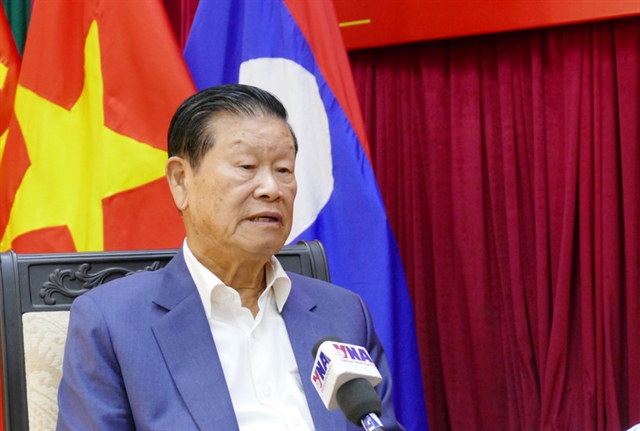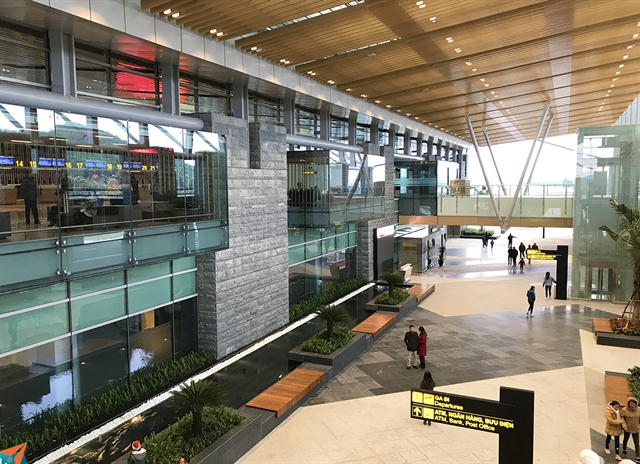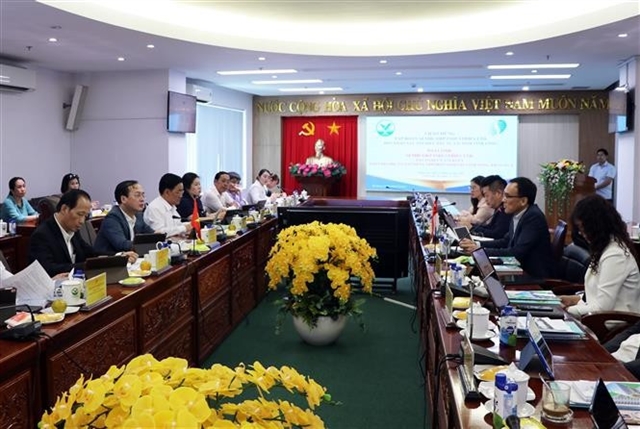 Opinion
Opinion

 |
| Vân Đồn Airport. Photo ahalongg.com |
According to the Ministry of Transport, the current investment capital for aviation infrastructure is limited. The proposal of the people's committees of some provinces and cities on airport planning and investment is a very good signal, however, choosing an appropriate investment model and method is also a matter of caution. Lê Đỗ Mười, Director of the Institute of Transport Strategy and Development (under the Ministry of Transport) talks to Sài gòn Giải Phóng (Liberated Saigon) newspaper about this issue.
Which airport model applied in Việt Nam will be superior, those with completely new investment such as Vân Đồn Airport or small airports, which are easier to invest in and more profitable?
Currently, there are many aviation investment models and the implementation of airport privatisation is also a new model in the world. When following the model, Vietnamese aviation industry, especially Vân Đồn Airport, is considered as making a breakthrough by industry fellows in the region. We have achieved certain results and have a complete airport model. From the experience we have gathered, there are currently eight models in the world, which are divided into specific groups. Usually, the regional airport locations that fit the needs will use a corresponding model.
From the needs and potentials of Việt Nam and with the experience gained from the case of Vân Đồn Airport, we need to apply the investment model in the form of public-private partnership (PPP) or franchise. The State assigns the private sector to invest in exploiting and investing in the entire airport and the State holds the rights, manages the airport and assigns the private entity to operate the terminal, airport apron, etc. Other models such as equitisation with the ownership rate of 50 per cent or more have proved to be causing difficulties for investors. The public-private partnership and franchising model will encourage investors to focus on investing, and the efficiency will be higher.
Should the selection of investors be properly screened to make sure they do proper business and not just sponsor?
We should not make the planning base on the needs of investors. There must be an overall development framework for the whole region and the whole society. We still have to base on the actual needs of the locality and region. Investors need to survey, evaluate and have the perspective of a business, not as a sponsor. When investing in an airport, the payback period is not short-term. Once put into the planning, if there’s a difference between the need of the locality and the desire of the investor, the project will be suspended and will not proceed smoothly. We already have the Law on PPP, the Law on Public Investment, and the specialised law on aviation, which all create a favourable legal corridor for attracting investment. Aviation investment is a new issue. We are trying to complete the project on this matter, helping localities that have the demand to prepare the necessary steps.
Recently, many localities have proposed to invest in the construction of airports and airfields. However, many people are still confused about these two concepts. Can you clarify?
Many planning makers and planning consultants in provinces and cities do not understand the nature of these two concepts. Many consultants think of an airfield as an airport. But it’s not like that. Airfields are managed by the Ministry of Defence, while airports are managed by the Ministry of Transport.
Currently, the provinces are proposing building airfields. If they want to upgrade those into airports, they have to fulfil six criteria, in which, the most important criteria are criterion number one (ensuring sufficient demand for freight) and criterion number two (ensuring the distance between the urban centre and the centre of the airports at about 100km).
When building the aviation planning in the past, we adhere to these six criteria. The International Civil Aviation Organization (ICAO) also makes some similar recommendations. From this criterion, by 2030 there will be 28 airports.
Recently, Prime Minister Phạm Minh Chính signed Decision No. 1121/QD-TTg to establish a working group to study and evaluate the overall possibility of civil aviation exploitation at Thanh Sơn military airport (Ninh Thuận province) and Biên Hòa military airport (Đồng Nai Province); studying the project of privatisation and investment in the mode of public-private partnership to exploit Nà Sản (Sơn La), Vinh (Nghệ An), Chu Lai (Quảng Nam), Cần Thơ (Cần Thơ City) airports and some other airports when needed. Currently, the working group is reviewing a number of dual-use airports, previously operated with the military, and providing research and evaluation processes.
According to the draft planning of airport in the 2021 period, with a vision to 2050, Việt Nam will have 14 international airports: Vân Đồn, Cát Bi, Nội Bài, Thọ Xuân, Vinh, Phú Bài, Đà Nẵng, Chu Lai, Cam Ranh, Liên Khương, Long Thành, Tân Sơn Nhất, Cần Thơ and Phú Quốc.
The fourteen domestic airports are: Lai Châu, Điện Biên, Sa Pa, Nà Sản, Đồng Hới, Quảng Trị, Phù Cát, Tuy Hòa, Pleiku, Buôn Ma Thuột, Phan Thiết, Rạch Giá, Cà Mau and Côn Đảo. VNS
BOX
Bình Định seeks to develop international airport
HCM City — The provincial government of Bình Định has written to the Ministry of Transport proposing developing the Phù Cát airport into an international one.
The upgrade of the airport is necessary as it is overwhelmed, especially on national holidays such as Tết, Nguyễn Tự Công Hoàng, vice chairman of Bình Định, said.
The Phù Cat airport has a designed capacity of 2.5 million passengers a year, and is expected to serve some five million passengers annually after the expansion.
The provincial government forecast that over 7.5 million tourists will travel to the province in 2025 and the number will soar to 12 million by 2030.
As such, the airport should be expanded and upgraded to handle larger aircraft, better air transport services and boost the province’s tourism sector.
The provincial government proposed expanding the apron from seven aircraft stands to 14, rebuilding the passenger terminal under the public-private partnership format, and developing one more runway using the State budget in the initial stage.
If approved, the province will map out a detailed plan for the airport expansion project and start to mobilise capital, apart from working with the agencies under the Ministry of National Defense to prepare for work on the project. VNS




